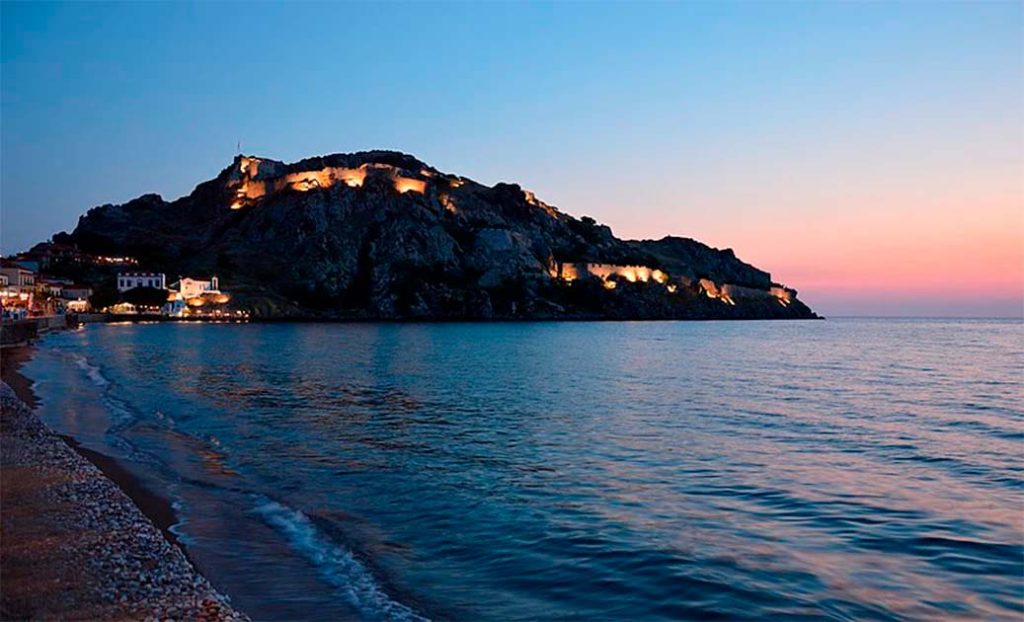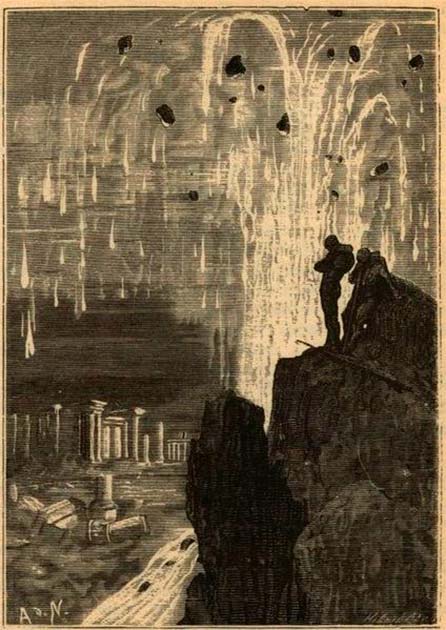Chryse Island is an island that only exists in its name. Known as the Lemnian Chryse because it was near the island of Lemnos, it appears in Homer and in Sophocles and both as clear that it is located in the Aegean Sea.
We know where Lemnos is. We know where almost everything else is from Homer and Sophocles. But at first glance it would seem that the ancient inserted a fictional land in amongst their real geography: when we look to the place Chryse Island is supposed to be, we find nothing.
Did Homer make up an island and insert it into his geography? Well, it would appear that this may not the case either. The island was apparently once a real place, but clues from later texts suggest that something happened to it.
By the second century AD, historians started recording that the Chryse Island had sunk and did not resurface again. Like another Atlantis, Chryse Island had apparently suffered some catastrophe and sunk beneath the waves.
The face of the earth is ever changing, and islands are tiny dots surrounded by water on all sides, naked against the awesome forces of the universe. But can an entire island go from existing one day to submerging underwater another day due to a sudden natural disaster?
What was Chryse Island, and what happened? And could such a catastrophe happen again?
Legends of Chryse Island
In the Greek language, Chryse means “golden” making the rough translation of Chryse Island the “Island of Gold”. The most notable structure on the Island was said to be a magnificent temple to Apollo, the Sun God.

People believe that Chryse Island was given the name as a tribute to the golden rays of Apollo that spread his glory on earth. But he was not the only god on the island: Chryse may have also been a nymph or goddess in Greek Mythology, with the island named for her.
We are a little uncertain about who she was, though. Many believe that Chryse was actually another name of Athena who guarded the Island against her altar present on the Island. It is said that Philoctetes, a famous Greek archer headed for Troy, stopped on the Chryse Island and was lured away from his companions by the Goddess Chryse.
- Santorini and Atlantis: Are They The Same?
- Odysseus’s Oracle of the Dead: A Gateway to Hidden Knowledge?
While Chryse Island disappeared into the sea in the second century AD, it is said that this end was earlier predicted by a famous oracle of that time. Such a catastrophe would explain why we can’t find the island today, but it would require a catastrophe of immense magnitude.
Some simply refuse to accept that the island was ever real. They prefer the simpler explanation that the ancients, borrowing from one another, included a fictional island in their real geography, whether by accident or deliberate.
But this mistake is a very widespread one. It is not just Greek authors and the oral tradition that recognizes the island; Greek historians confirm that Chryse did really exist around 73 BC. During that time, a battle between Romans and Mithridates of Pontus was also recorded on the Island.
According to these ancient historical texts the Island was overwhelmed by the waves of the Aegean Sea and disappeared into the depths of water. After this, only the probable locations of the remnant of Chryse Island have been estimated. The true location of Chryse Island remains unknown to this day.
The Rediscovery of Chryse Island
There have been many investigations and expeditions to find the true location of Chryse Island. The sunken island was claimed to have been rediscovered in 1960 near the Island of Lemnos. The sunken landmass was said to exist some 40 feet (12 meters) below the sea surface as ruins of an island.
The sunken landmass is today known as the Kharos Bank, a 10 square mile (30 square km) landmass that appears to still have signs of inhabitation and structures on it. Some white marble building blocks were found on the sea bottom that could have been the ruins of the famed Apollo temple of Chryse Island.
This is a plausible theory as Greek architecture uses white marble and has a distinct style of stonework and masonry building. The presence of building blocks on the sea bottom in that area indicates that the bottom was once an inhabited island on the surface of the sea.
Even though people believe the theory that Kharos Bank is actually the sunken Island of Chryse, there has been no further research and investigation with which to confirm this, and it remains only a theory. However, its proximity to Lemnos Island, where Chryse Island could have been, gives some backbone to the idea.
- Who Built the Temples of Malden Island, and Where did they Go?
- The Secret Gods of the Greek Pantheon: Who Were the Cabeiri?
There is another theory that revolves around the present ruins of Chryse Island. Many historians and locals believe that the remains of Chryse exist in a small islet that is off the coast of Lemnos. The islet is just 70 to 80 meters (230 to 260 feet) off the north coast of Lemnos.
The place is known as Varvara today, and is very much still there. The islet might seem insignificant from afar, but it has signs of an illustrious history that closely links with Greek history and mythology.
There are some foundations of ancient structures that could have belonged to Apollo’s temple or Athena’s altar, where Philoctetes was bitten by a viper that was guarding it. Many also point to the fact that fragments of early Greek pottery are also found in Varvara.

But what of the stories of it sinking? Well, although have been no further excavations to substantiate these theories, historians say Varvara was once larger and has been reduced in size due to the earth’s tectonic plate activity.
Because of tectonic plate activity, parts of Varvara have sunk and disappeared into the sea, much like Chryse Island. Therefore, it is possible that Varvara and the ancient Chryse Island were the same.
Only further investigation in Varvara and excavations can reveal what rests under the mound of the small islet. Was there a temple? Was there an altar dedicated to Chryse or Athena? The legend of Chryse has been shaped by local tales and writings that have meandered through mythology and Greek history.
Could the fate that Chryse faced also happen to a present-day island? The disappearance of Chryse and its famed temple talks about the transience of human creation and how nature is more powerful than men. It’s loss, like Atlantis, may be more a metaphor than a reality.
From a mighty temple to the unlucky Philoctetes, Chryse Island has seen a major part of early Greek history. Therefore, we were to definitively find the remains of Chryse, it would tell us a lot about early Greek history and mythology.
Top Image: Chryse Island is simply not there today, and we can only speculate as to what happened. Source: Cleveland Museum of Art / Public Domain.
By Bipin Dimri